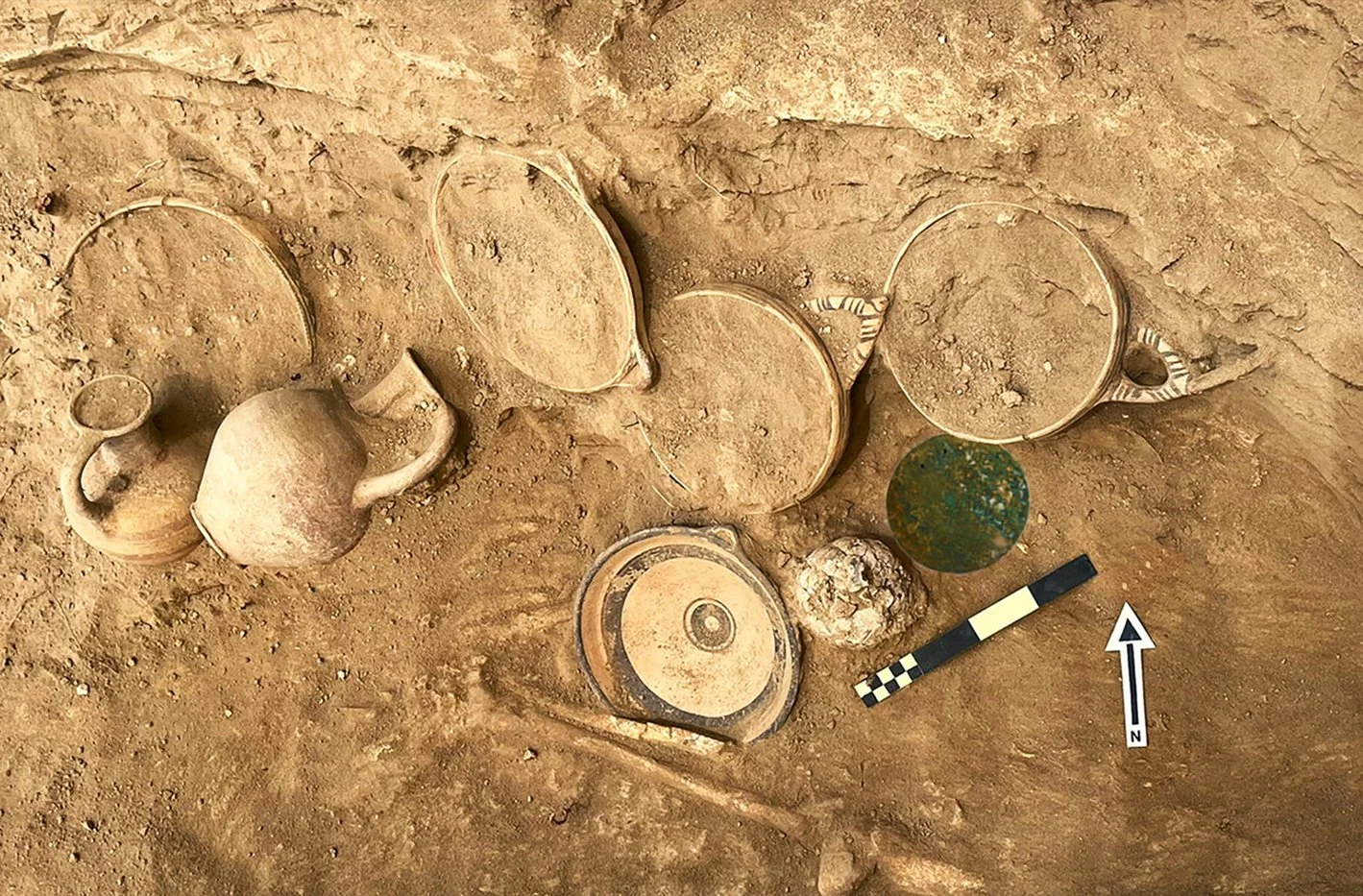Researchers investigating the rich historical tapestry of Hala Sultan Tekke, an ancient city nestled along the southeast coast of Cyprus, have stumbled upon a remarkable artifact that unveils intriguing connections between Cypriot elites and the vibrant cultures of the Aegean.
This discovery centers around a Minoan bronze mirror unearthed from an intact Late Bronze Age tomb within the city’s archaeological site. Dated to approximately 1300 BCE, the mirror stands out as a rare and significant find, offering a glimpse into the funerary practices and cultural exchanges of this bustling Cypriot port city.
Hala Sultan Tekke, flourishing between 1630 and 1150 BCE, held a pivotal position adjacent to a sheltered bay of the Mediterranean Sea, making it a pivotal hub for trade and the dissemination of prized commodities across the region.
Recent excavations within the city’s extra-urban necropolis have unveiled a series of well-preserved tombs, with Chamber Tomb XX emerging as a treasure trove of insights. Within this tomb lay the remains of four individuals, including a young woman, alongside an impressive array of 264 funerary objects sourced from diverse Aegean, Crete, Egyptian, and Levantine cultures. Among these treasures were Mycenaean and Minoan ceramics, opulent gold jewelry, ivory artifacts, glassware, and notably, the enigmatic bronze mirror.
Measuring between 11.2 and 11.4 centimeters in diameter and weighing 156 grams, the mirror bears distinct hallmarks of Aegean Late Bronze Age craftsmanship, hinting at its probable origin in a workshop situated, most likely, in Crete.
Remarkably, only one other similar mirror has been documented, discovered previously in tomb 66 at Enkomi, located in eastern Cyprus. This scarcity underscores the rarity and significance of Aegean-origin objects within Cypriot contexts during this epoch.

The inclusion of this Minoan mirror within Tomb XX of Hala Sultan Tekke underscores direct cultural and trade ties between local elites and Aegean societies, particularly Crete. This inference gains further traction from the plethora of imported goods spanning the eastern Mediterranean unearthed alongside the mirror.
Mirrors, inherently personal and symbolically charged objects, offer profound insights into the aesthetic inclinations, values, and potentially the self-image of their owners. In elite funerary settings, such as Tomb XX, mirrors could signify not just personal adornments but also tokens of diplomatic alliances, commercial relationships, and socio-political ties between Aegean and Cypriot realms during an era characterized by bustling commercial and cultural interactions.
The discovery of the Minoan bronze mirror within Hala Sultan Tekke’s Tomb XX represents a pivotal milestone in understanding the intricate web of connections and exchange dynamics that wove together Cypriot and Aegean societies during the Late Bronze Age, illuminating a chapter of ancient history brimming with cross-cultural influences and diplomatic engagements.
